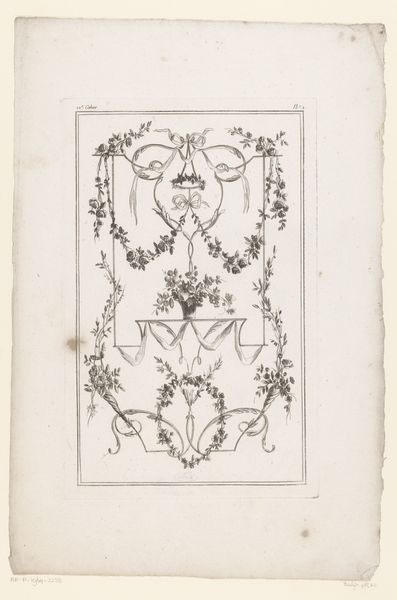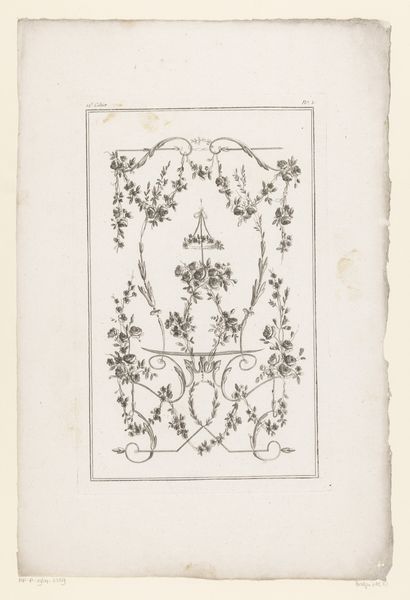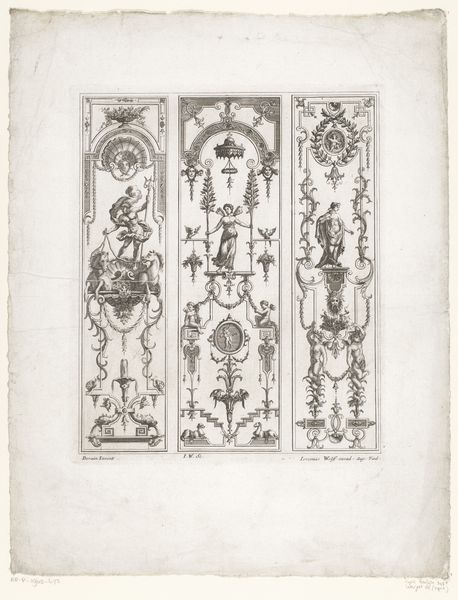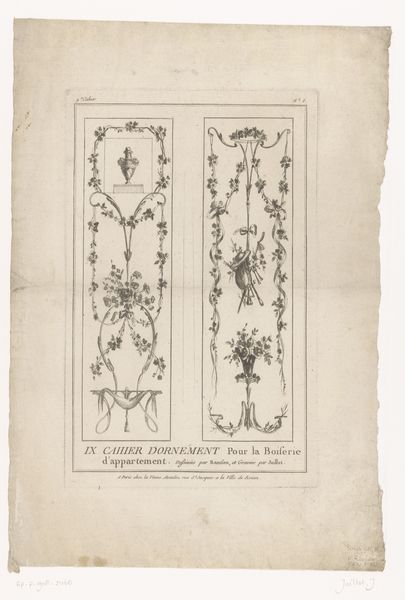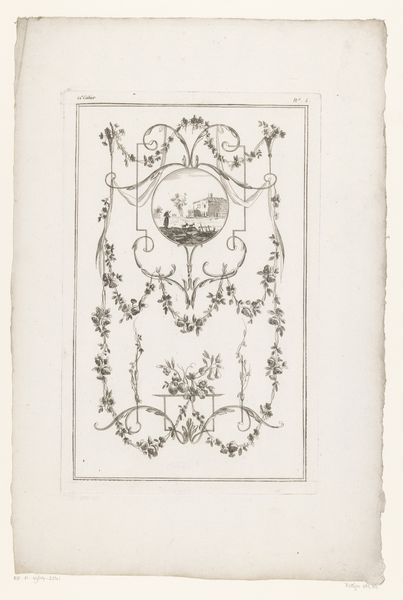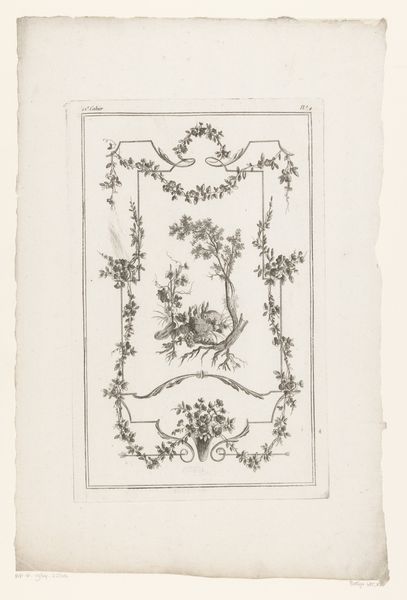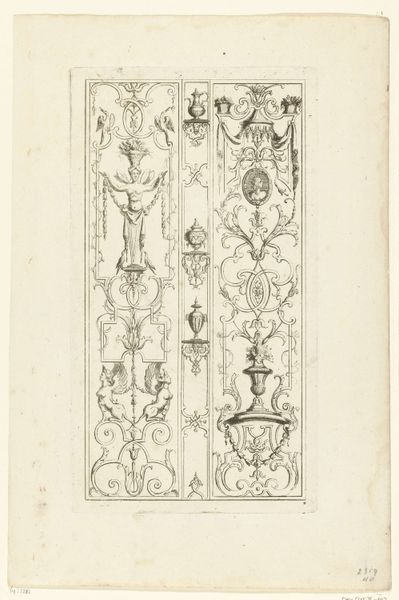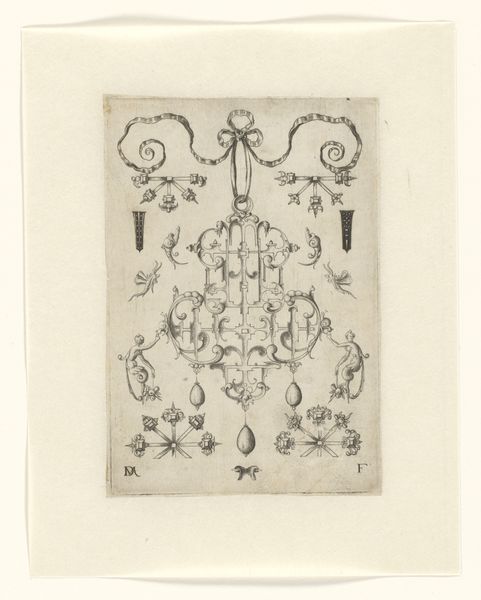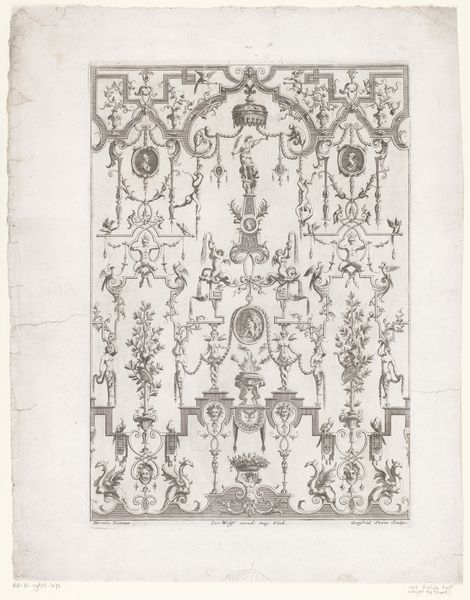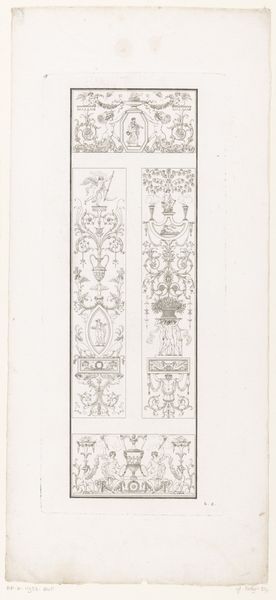
drawing, paper, ink
#
drawing
#
neoclacissism
#
paper
#
ink
#
geometric
#
line
#
academic-art
#
decorative-art
Dimensions: height 321 mm, width 204 mm
Copyright: Rijks Museum: Open Domain
Editor: Here we have Jacques Juillet’s "Panelen met fakkel" created between 1777 and 1779. It’s a drawing in ink on paper, currently held at the Rijksmuseum. The precision of the linework is striking; the decorative panels feel very ordered, very formal. What strikes you most about this piece? Curator: What interests me immediately is how this drawing, seemingly a 'preparatory sketch' for decorative art, exposes the means of its own production. Juillet renders what could be translated into, say, carved wood or plaster. The material limitations and possibilities inherent in those 'final' forms are, in a way, already present here. Look at how the ink mimics potential carving techniques; the cross-hatching implies depth. Do you see how the medium itself influences our perception? Editor: I see that now, the shading does lend a sculptural quality. So, instead of just appreciating the design, we're also considering the labor and process involved in bringing such designs to life as ornamentation, like on furniture perhaps? Curator: Exactly. Think about the social context as well. Who commissioned such designs? Who would have produced the final ornamental panels, translating Juillet's drawing into a tangible object? Were they skilled artisans, or perhaps part of a larger, more industrial workshop? It prompts questions about consumption. Was there a large appetite for neoclassical decoration? Editor: It makes you think about how the artist is connected to a whole supply chain of making, like Juillet isn't just designing in isolation, but responding to, and maybe even dictating, larger economic trends! Curator: Precisely! It reveals art-making not as solitary genius but as deeply embedded within systems of labor, materiality, and societal needs. Editor: I hadn’t thought about approaching decorative art like that, tracing the process and material transformation. It adds a new dimension. Curator: And that perspective can shift our understanding of even seemingly straightforward works of art, if you consider the materials involved and production chain behind their creation.
Comments
No comments
Be the first to comment and join the conversation on the ultimate creative platform.

